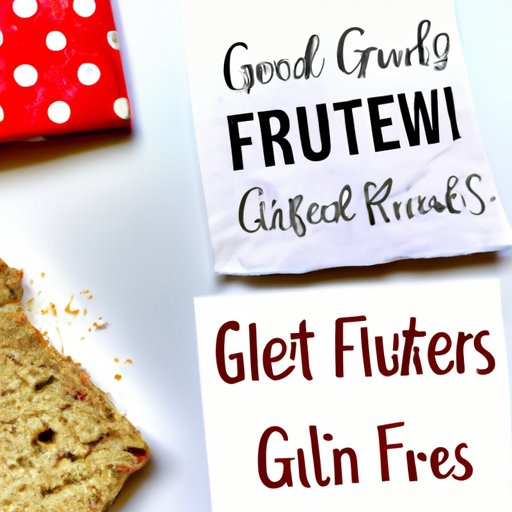
Why Going Gluten-Free Is Important: A Complete Guide
Going gluten-free has become a popular trend in recent years, with more and more people eliminating gluten from their diets. But what exactly is gluten, and why is it important to go gluten-free? In this article, we’ll explore the ins and outs of gluten-free living, including the health benefits, meal planning tips, and even some gluten-free baking recipes! Let’s get started.
Understanding Gluten-Free: A Comprehensive Guide to Living a Gluten-Free Lifestyle
The first step in embracing a gluten-free lifestyle is to understand what gluten is and why it can be harmful. Gluten is a protein found in wheat, rye, and barley that can cause inflammation in the gut, especially in people with celiac disease. Celiac disease is an autoimmune disorder where the ingestion of gluten causes damage to the lining of the small intestine. Going gluten-free is the only way to manage celiac disease and prevent further damage to the body. However, even those without celiac disease can benefit from a gluten-free diet.
When starting a gluten-free diet, it’s essential to learn how to read food labels. Gluten can hide in unexpected places, so it’s vital to know what to look for, and which foods to avoid. Some foods to avoid include bread, pasta, crackers, cereals, baked goods, and beer. However, many foods are naturally gluten-free, such as fruits, vegetables, meat, fish, and dairy. Eating out can be a challenge, but most restaurants now offer gluten-free options or can accommodate gluten-free dietary needs.
The Health Benefits of Going Gluten-Free
While gluten-free diets are essential for those with celiac disease, there are other benefits to going gluten-free. Gluten can be difficult to digest, leading to digestive issues, bloating, and discomfort. By eliminating gluten, many people report improvements in their digestion. Additionally, gluten can cause inflammation in the body, leading to joint pain, headaches, and fatigue. Removing gluten from the diet can help reduce inflammation and improve overall health. Mental health also plays a role in gluten-free living, with some studies linking gluten consumption to increased anxiety and depression. Removing gluten from the diet may improve mood and reduce symptoms of anxiety and depression.
Gluten-Free Meal Planning: How to Stay Healthy and Satisfied
Planning gluten-free meals can seem challenging at first, but with a little preparation, it can be easy and delicious. Focus on naturally gluten-free foods, such as fruits, vegetables, meats, fish, and grains like rice and quinoa. Make a list of gluten-free snacks, such as nuts, seeds, and gluten-free crackers to keep on hand. When grocery shopping, look for gluten-free labels or certifications to ensure that products are safe to consume. Meal prep can also help make gluten-free eating more manageable. Prepare meals ahead of time and freeze them for quick and easy meals on busy days.
Another key to gluten-free meal planning is to use the right ingredients. Some of the best gluten-free flours include almond flour, coconut flour, and rice flour, which can be used in a variety of recipes. Avoid using wheat flour substitutes, such as all-purpose gluten-free flour, which still contains gluten. There are also many gluten-free recipes available online, so there’s no need to sacrifice flavor and variety when going gluten-free.
A Guide to Gluten-Free Baking: How to Make Delicious Gluten-Free Desserts
Baking is one of the biggest challenges when going gluten-free because traditional baking relies heavily on wheat flour. However, with the right ingredients and techniques, it’s easy to create delicious and satisfying gluten-free desserts. When baking gluten-free, it’s essential to use a mix of gluten-free flours to ensure the right texture and consistency. Some great gluten-free flours for baking include rice flour, almond flour, and coconut flour. There are also many gluten-free baking mixes available that make baking a breeze.
Some popular gluten-free desserts include cakes, cookies, and bread. Gluten-free cakes can be made with a combination of gluten-free flours and coconut oil, while gluten-free cookies can be made with almond flour and honey. Gluten-free bread can be made with a mix of gluten-free flours, flaxseed meal, and eggs. Again, there are many gluten-free baking recipes available online, so there’s no need to sacrifice taste and enjoyment when going gluten-free.
Debunking Common Myths About Going Gluten-Free
Despite the many benefits of going gluten-free, there are still many myths and misconceptions surrounding a gluten-free lifestyle. One common myth is that all gluten-free foods are healthy. However, many gluten-free products contain added sugar, salt, and fat to enhance flavor, making them just as unhealthy as their gluten-containing counterparts. It’s essential to read labels carefully and focus on whole, unprocessed foods to ensure a healthy and balanced diet.
Another myth is that a gluten-free diet is low in fiber. While some gluten-free products may be low in fiber, there are many naturally gluten-free foods that are high in fiber, such as fruits, vegetables, nuts, seeds, and some gluten-free grains like quinoa.
Conclusion
In conclusion, going gluten-free is not just a trend but can also provide numerous health benefits, especially for those with celiac disease. Understanding what gluten is, how to read labels, meal planning, choosing the right ingredients for baking, and knowing the truth versus the myths about going gluten-free are important in making the transition as easy as possible. With a little bit of preparation, anyone can embrace a gluten-free lifestyle, and enjoy all the benefits that come with it.




